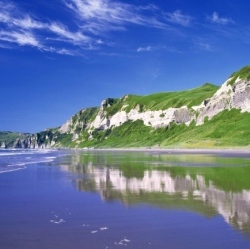
Rain and snow have graced the West recently, causing many to breathe a sigh of relief about possible easing of the severe drought conditions that have worsened there over the past years. Complacency about drought and climate change is not warranted, say Dr. Noah Diffenbaugh and his research team.
In “Anthropogenic warming has increased drought risk in California,” an article just published online today by the Proceedings of the National Academy of Sciences, Diffenbaugh and colleagues reveal proof of a somewhat counterintuitive hypothesis: higher temperatures, not necessarily precipitation shortages, drive the phenomenon of drought.
Diffenbaugh heads the Climate and Earth System Dynamics research group in the School of Earth, Energy & Environmental Sciences at Stanford, where he’s an associate professor and a senior fellow in the Stanford Woods Institute for the Environment. He was behind last September’s conclusions that climate change is occurring 10 times faster now than at any time in the past 65 million years. He has also said that at its current pace, climate change will involve a 5- to 6-degree Celsius rise by 2100.
About the current study of drought and climate change, Diffenbaugh notes: “Of course low precipitation is a prerequisite for drought, but less rain and snowfall alone don’t ensure a drought will happen. It really matters if the lack of precipitation happens during a warm or cool year. We’ve seen the effects of record heat on snow and soil moisture this year in California, and we know from this new research that climate change is increasing the probability of those warm and dry conditions occurring together.”
